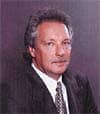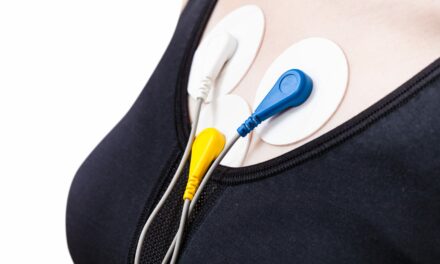Market Forecast Good for Sleep Industry
A survey of sleep centers, conducted by Wachovia Securities, forecasts that the OSA market will grow more than 20% through 2007 and also reports that sleep center capacity is expected to increase 31% this year. The growth should prove to be advantageous to not only sleep sufferers but also manufacturers of sleep products.
“The results of Wachovia’s sleep center survey reflect encouraging growth in diagnostic capacity, which ResMed believes is critical in reaching the millions of undiagnosed sleep apnea patients in the United States alone,” said Hillary Theakston, director of investor relations for ResMed Inc, San Diego. “With all that we now know about the clinical benefits of treating obstructive sleep apnea and the potential savings to our health care system, there has never been a better time to invest in the treatment of this gravely under-diagnosed condition.”
 According to Wachovia, average sleep center capacity is expanding.
According to Wachovia, average sleep center capacity is expanding.
Statistics predicting that more sleep centers will be selling CPAP units directly to patients also show promise for OSA-treatment device manufacturers. According to the survey, currently around 15% of sleep centers sell masks and flow generators directly to patients (generally the remainder are referred to home medical equipment suppliers), but the number of sleep centers directly selling to the patient is expected to increase.
“Around 15% of sleep centers plan to start selling equipment directly within the next 12 months, a positive, in our view, for both Respironics and ResMed, which have established relationships with physicians and sleep centers,” said Michael S. Matson, senior analyst, medical device equity research, Wachovia Capital Markets LLC, New York, who also notes that sleep centers are more likely to provide high-end equipment than home medical equipment suppliers.
Also predicted in the survey was an anticipated decline in Respironics’ share of prescriptions. According to the Wachovia Securities report, Respironics is expected to lose 2% of its flow generator prescription share throughout 2006 to companies like Fisher & Paykel and Puritan Bennett.
The survey results also noted that brand-specific prescriptions for masks and flow generators are expected to increase. Up from 29% in a previous study, brand-specific prescriptions for flow generators accounted for 47% of prescriptions in the current survey. In rating flow generators, ResMed’s S8 received the highest average ranking from the study’s respondents with the ResMed S7 in second followed by Respironics’ M-Series and RemStar flow generators.
 Sleep Problems Can Be Headache for Kids Sleep Problems Can Be Headache for KidsMayo Clinic researchers have found that frequent headaches in children appear to be associated with sleep problems. More than two thirds of children studied who suffer from chronic daily headache also experience sleep disturbance, especially delay in sleep onset. For children with episodic headaches, one fifth had sleep problems. The findings were presented at the 24th Annual Conference on Sleep Disorders in Infancy and Childhood held from January 26-28 in Rancho Mirage, Calif. “What is novel in our study is the finding that a high percentage of patients with headache have sleep disturbance,” said Kenneth Mack, MD, PhD, a pediatric neurologist specializing in headache and the senior study investigator. “The number of patients who have headaches and also sleep disturbance surprised us. They also have the same sleep disturbance: a delay in sleep onset.” The investigators do not yet know which problem comes first—sleep problems or headache. In some children sleep problems come first, and in others, headache is first. In offering treatment recommendations, Lenora Lehwald, MD, a Mayo Clinic neurology resident and study investigator, said that key nonmedication treatments include attention to maintaining routine in the child’s schedule and developing good sleep hygiene. “Educating the patient and family on things like good sleep habits may in and of itself help to improve the sleep quality and thus the headaches in the long run,” she said. Beyond nonmedication treatments, if a child with both headache and sleep problems requires medicine, Mack prefers migraine medication that also helps with sleep issues. |
Different Drugs, Similar Outcomes
The wave of new sleeping pills on the market are effective treatments for insomnia, but they have different effects and no one drug stands out as the best, according to a new review of 141 studies on drugs including Sonata, Ambien, Lunesta, and Imovane. Reviewers from the Oregon Evidence-based Practice Center at the Oregon Health and Science University concluded that the drugs were better than placebo pills at treating insomnia symptoms, such as trouble falling asleep and staying asleep. There were few head-to-head comparisons of the drugs, however, and “although there are some differences between the drugs on some outcomes, no one drug appeared to be consistently superior,” said the Oregon reviewers, led by Susan Carson, MPH. The reviewers also found that short-term side effects such as headaches and daytime sleepiness occurred at similar rates with the drugs.
| Oral Appliances Recommended for Moderate OSA New practice parameters published by the American Academy of Sleep Medicine (AASM) in the February issue of the medical journal SLEEP recommend oral appliances as a first-line treatment for snoring and mild to moderate OSA, but for patients with severe OSA, CPAP remains the recommended therapy. Potentially, the recommendations could alter sleep clinicians’ initial approach to treating mild to moderate OSA. “The main thing for sleep clinicians is that they need to understand that oral appliances should be offered as a first-line treatment [for mild to moderate OSA],” said Kent Moore, MD, DDS, president of the Academy of Dental Sleep Medicine, Westchester, Ill. “It is a combination of judging the severity of the patient’s sleep problem and then educating the patient to their alternative treatment options. It really is a joint decision by both the sleep clinician and the patient.” The recommendations, put together by a review committee commissioned by the AASM, are based on several years of research. “We now have level one data, which is basically randomized, controlled, and prospective trials,” Moore said. “The summary of these level one studies shows that oral appliances can be a very effective means of treating mild to moderate sleep apnea patients.” This is good news for the estimated 18 million OSA sufferers in the United States, since it enables them to avoid the risks associated with surgery and the discomfort that can accompany other treatment methods. “A lot of those folks simply cannot tolerate CPAP use,” Moore said. “If they are at home with a CPAP [device] beside their bed that they are not using, they are not getting treated for their apnea, so they are at risk for cardiovascular illnesses and cardiovascular morbidity issues. Now there is an excellent alternative therapy that potentially could help them avoid surgery and could help them solve their problem.” While CPAP is still considered the most efficacious treatment for OSA, the new practice parameters (and accompanying review paper) validate the effectiveness of oral appliances as a viable treatment alternative for those patients with mild to moderate OSA who either prefer it to CPAP, or are unable to successfully comply with CPAP treatment. |
Genetic Link Found for SIDS
Steve A.N. Goldstein, MD, PhD, and colleagues from the Pritzker School of Medicine in Chicago have found that a specific mutation, called S1103Y, in a heart protein known as SCN5A, is associated with a 24-fold increased risk of sudden infant death syndrome (SIDS) in African American infants. The authors show that this mutant protein, when exposed to acidic conditions (which can be caused by low blood oxygen levels when infants are placed in the face-down or “prone” sleeping position), malfunctions in a way that has been previously shown to trigger an irregular heartbeat. The study appears in the February issue of the Journal of Clinical Investigation.



